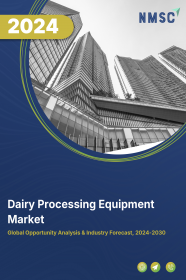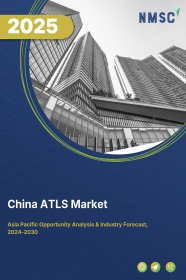
Asia-Pacific Automated Truck/Trailer Loading System Market by Type (Ground-Based and Overhead), by Automation (Semi-Automatic and Fully Automatic), by Load Type (Fluid Loads, Containers, Totes, Pallets, and Wheeled Carts/Cages), by Truck/Trailer Type (Non-Modified and Modified) and Others –Opportunity Analysis and Industry Forecast, 2024–2030
Industry: Construction & Manufacturing | Publish Date: 15-Feb-2025 | No of Pages: 247 | No. of Tables: 153 | No. of Figures: 118 | Format: PDF | Report Code : CM1680
Market Definition
The Asia-Pacific ATLS Market size was valued at USD 204.8 million in 2023, and is predicted to reach USD 412.5 million by 2030, at a CAGR of 10.5% from 2024 to 2030.
An Automated Truck/Trailer Loading System (ATLS) represents a technology-driven solution for material handling, aimed at automating tasks associated with truck and trailer loading and unloading. Typically, ATLS consists of a conveyor system, loading dock, and control system. The conveyor system transports pallets or containers to the loading dock, where the control system manages the loading or unloading process. The principal goal of ATLS is to streamline and optimize logistics and supply chain operations by automating manual tasks involved in handling goods during loading and unloading, thereby improving efficiency, safety, and productivity within warehouse and distribution center environments.
ATLS utilizes a blend of mechanical, conveyor, sensor, and control technologies to efficiently and accurately handle various types of cargo, including individual boxes, containers, pallets, and bulk goods. These systems seamlessly integrate into loading docks, warehouses, and distribution centers, significantly contributing to operational efficiency gains, increased throughput, and enhanced safety by reducing the reliance on manual labour in the loading process. Moreover, these solutions can be customized to meet the specific needs of different industries, cargo types, and existing infrastructure, ensuring adaptability and efficiency enhancements across diverse logistical scenarios.
The Growing Adoption of Automation in Warehouses Boosts the Growth of the Market
The extensive integration of automated solutions within warehouses and the logistics sector is propelling the growth and progression of the ATLS industry.
This adoption seamlessly aligns with the technology of ATLS as businesses pursue thorough automation in their logistics and supply chain operations. The incorporation of ATLS into current automation frameworks, like conveyor systems and robotic material handling, notably boosts operational effectiveness.
Growing Safety Enrichments Drives the Growth of the Market
Safety improvement plays a crucial role in propelling the Automated Truck/Trailer Loading System Market forward in the U.S. These systems are equipped with state-of-the-art sensors, cameras, and algorithms designed to ensure safety during loading procedures.
The advanced sensors within these systems detect obstacles, objects, or personnel in the loading area in real-time, allowing the system to adjust its operations to prevent accidents or collisions. Complementing these sensors, cameras offer a visual feed of the loading process, enabling remote monitoring and allowing operators to promptly identify potential safety risks.
Furthermore, advanced algorithms optimize loading sequences, evenly distribute weight, and prevent overloading, thereby reducing the risk of accidents or damage to goods. By placing a high emphasis on safety through these functionalities, automated loading systems create a safer working environment for personnel and decrease the likelihood of cargo damage during transportation.
Consequently, the enhancement of safety emerges as a pivotal factor driving the adoption of automated loading systems, aligning with companies' goals to prioritize both employee well-being and cargo integrity.
High Initial Costs Hinders the Growth of the Market
Numerous organizations encounter notable obstacles when contemplating the adoption of ATLS (Automated Truck/Trailer Loading Systems), primarily stemming from the considerable upfront costs associated. This aspect serves as a deterrent to market expansion.
The initial expenses encompass acquiring technology, investing in infrastructure, addressing customization and integration requirements, conducting workforce training, engaging in consulting services, and evaluating scalability potentials.
The Integration of Advanced Technologies Creates Opportunities for the Market
The integration of artificial intelligence (AI), the Internet of Things (IoT), and predictive maintenance into ATLS presents significant growth prospects for the market in the near future.
AI enhances real-time loading and unloading operations by leveraging IoT data, thereby improving overall efficiency dynamically. Predictive maintenance reduces downtime and unexpected repair costs while enhancing safety through IoT monitoring and AI-driven risk identification, ultimately lowering liability expenses.
This amalgamation generates valuable data insights essential for informed decision-making, offers customization and scalability options, and attracts industries in search of innovative solutions. Consequently, these elements collectively lay the groundwork for market expansion opportunities.
China Holds the Dominant Market Share in Asia-Pacific ATLS Market
The extensive adoption of automated solutions in warehouses and the logistics sector is driving the growth and advancement of the ATLS industry in China.
This adoption seamlessly aligns with ATLS technology, as businesses strive for comprehensive automation in their logistics and supply chain operations. The integration of ATLS with existing automation setups like conveyor systems and robotic material handling notably enhances operational efficiency.
Additionally, Safety improvement serves as a significant catalyst in the Automated Truck/Trailer Loading System Market in the region.
These systems are equipped with state-of-the-art sensors, cameras, and algorithms dedicated to ensuring safety during loading operations. Integrated advanced sensors detect obstacles, objects, or personnel in the loading area in real-time, allowing the system to adapt operations to prevent collisions or accidents.
Furthermore, cameras provide a visual feed of the loading process, facilitating remote monitoring and enabling operators to promptly identify potential safety hazards. Moreover, sophisticated algorithms optimize loading sequences, evenly distribute weight, and prevent overloading, thus minimizing the risk of accidents or damage to goods.
Prioritizing safety through these features creates a safer working environment for personnel and reduces the likelihood of cargo damage during transit. Consequently, safety enhancement emerges as a primary driver fostering the adoption of automated loading systems in China, aligning with companies' objectives to prioritize employee well-being and cargo integrity.
South Korea to Witness Substantial Growth in the Asia-Pacific ATLS Market
The extensive adoption of automated solutions in warehouses and the logistics sector is driving the growth and progression of the ATLS industry in South Korea.
This adoption seamlessly aligns with ATLS technology, as businesses pursue comprehensive automation in their logistics and supply chain operations. The integration of ATLS with existing automation setups like conveyor systems and robotic material handling significantly enhances operational efficiency.
Also, the increase in labour costs is fuelling the adoption of ATLS across various industries. As labour expenses continue to rise, particularly in labour-intensive sectors such as manufacturing and logistics, companies are actively seeking cost-effective and efficient solutions.
The challenge of recruiting and retaining a workforce capable of tasks like loading and unloading trucks is becoming increasingly difficult. In response, ATLS has emerged as a robust solution, reducing the reliance on human labour and ensuring consistent and reliable performance.
These systems operate continuously without breaks, thereby enhancing efficiency and yielding cost savings. This makes them an attractive option for industries looking to improve operations while grappling with high labour expenses. Consequently, the rise in labour costs serves as a significant driver propelling the adoption and growth of ATLS in South Korea.
Competitive Landscape
The Asia-Pacific ATLS market comprises various market players, such as FLSmidth, Beumer Group GmbH & Co. KG, Actiw Ltd., Virans, Habasit , Interroll Group, Bastian Solutions, LLC, ARi, Joloda Hydraroll Limited, Panther Technologies, and others.
Asia-Pacific ATLS Market Key Segments
By Type
-
Ground-Based
-
Overhead
By Automation
-
Semi-automatic
-
Fully Automatic
By Load Type
-
Fluid Loads
-
Containers
-
Totes
-
Pallets
-
Wheeled Carts/Cages
By Truck/Trailer Type
-
Non-modified
-
Modified
By Loading System
-
Chain Conveyor System
-
Slat Conveyor System
-
Belt Conveyor System
-
Skate Conveyor System
-
Roller Track System
-
Loading Plate System
-
Others
By Industry Vertical
-
Aviation
-
Cement
-
Paper
-
FMCG
-
Post & Parcel
-
Automotive
-
Textile
-
Pharmaceutical
By Country
-
China
-
Japan
-
India
-
South Korea
-
Australia
-
Indonesia
-
Singapore
-
Taiwan
-
Thailand
-
Rest of Asia-Pacific
REPORT SCOPE AND SEGMENTATION:
|
Parameters |
Details |
|
Market Size in 2023 |
USD 204.8 Million |
|
Revenue Forecast in 2030 |
USD 412.5 Million |
|
Growth Rate |
CAGR of 10.5% from 2024 to 2030 |
|
Analysis Period |
2023–2030 |
|
Base Year Considered |
2023 |
|
Forecast Period |
2024–2030 |
|
Market Size Estimation |
Million (USD) |
|
Growth Factors |
|
|
Countries Covered |
10 |
|
Companies Profiled |
10 |
|
Market Share |
Available for 10 companies |
|
Customization Scope |
Free customization (equivalent up to 80 working hours of analysts) after purchase. Addition or alteration to country, regional, and segment scope. |
|
Pricing and Purchase Options |
Avail customized purchase options to meet your exact research needs. |
KEY PLAYERS
-
FLSmidth
-
Beumer Group GmbH & Co. KG
-
Actiw Ltd.
-
Virans
-
Habasit
-
Interroll Group
-
Bastian Solutions, LLC
-
ARi
-
Joloda Hydraroll Limited
-
Panther Technologies

















 Speak to Our Analyst
Speak to Our Analyst




















